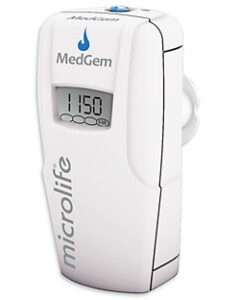The relationship between resting metabolic rate and quality of life is moderated by age and body composition in women: a cross-sectional study. Published by Melissa J. Benton and Andrea M. Hutchins.
Background
Health-related quality of life (HRQOL) is related to body composition, which is also related to resting metabolic rate (RMR). RMR can be increased by exercise and diet interventions that are not dependent on changes in body composition, so a link between RMR and HRQOL may provide interventions that directly improve HRQOL in women.
Methods
One hundred twenty women (median age 63.5 [IQR: 53.0–71.0] years) completed one-time measurement of body composition (multi-frequency bioelectrical impedance), RMR (handheld calorimetry), and HRQOL (RAND-36). Physical (PCS) and mental (MCS) composite scores were calculated for the RAND-36.
Pearson correlations were used to identify relationships between RMR, body composition, and HRQOL. Variables at the p < .01 level were entered into multiple regression models.
Resting Metabolic Rate
Resting metabolism was measured using handheld calorimetry (MedGem, Microlife, USA). The MedGem is an indirect calorimeter that has been validated and previously used with healthy adults as well as clinical populations [36–41].
The MedGem is not only valid and reliable, but it is also easy to use and minimizes participant burden. Prior to metabolic measurement, participants sat quietly for 10 min. Then, for measurement with the MedGem, a small nose clip was placed over both nares and a mouthpiece was fitted with a firm lip seal.
Oxygen consumption was measured continuously for approximately 10 min until the device indicated that the test was complete. RMR was calculated by the device as kcal/day.
Results
Median body mass index was 26.1 [IQR: 23.2–30.9] kg/m2 and median lean mass index was 16.1 [IQR: 14.6–17.3] kg/m2. Body composition consisted of fat mass (median 27.2 [IQR: 20.3–34.7] kg) and lean mass (median 42.7 [IQR: 38.2–46.9] kg). Median RMR was 1165.0 [IQR: 1022.5–1380.0] kcal/day.
Median HRQOL scores were PCS (84.0 [IQR: 74.0–93.0]) and MCS (85.0 [IQR: 74.3–90.0]). RMR was not directly related to PCS, but was directly and negatively related to MCS (p = .002). RMR was significantly and positively related to body composition (lean mass: p < .001; fat mass: p < .001), body mass index (p = .005), and lean mass index (p < .001); but only fat mass (PCS: p < .001; MCS: p < .001) and body mass index (PCS: p < .001; MCS: p < .001) were related to HRQOL, although the relationship was negative.
In addition, age was found to be significantly negatively related to RMR (p < .001) and PCS (p = .003). Regression models confirmed the moderating influence of age and body composition on the relationship between RMR and HRQOL. RMR, age, fat mass, and body mass index explained 24% (p < .001) of variance in PCS; and RMR, fat mass, and body mass index explained 15% (p < .001) of variance in MCS.
Conclusion
In women, the relationship between RMR and HRQOL is moderated by age, fat mass, and BMI. Although RMR has a direct relationship with mental quality of life, the intervening effect of fat mass and BMI is somewhat stronger. By comparison, RMR has no direct effect on physical quality of life and instead, age is negatively related to both.
In addition, fat mass and BMI have an intervening influence that is similar to their relationship with mental quality of life. Although these moderating factors were unexpected, understanding the primary and secondary pathways leading to HRQOL in women will allow clinicians and researchers to direct interventions more effectively by targeting specific variables along those pathways, thereby improving health outcomes.
Read the full article@ https://www.ncbi.nlm.nih.gov/pmc/articles/PMC11015637/
Instead of estimating RMR with the Harris-Benedict or Katch-McArdle formula, the BodyGem and MedGem indirect calorimeters scientifically measure a clients Metabolic Fingerprint, that is unique to them.
Estimation formulas cannot factor in thyroid issues, the effects of medications, etc. For the best care, the American Dietetics Association recommends using indirect calorimetry to measure RMR for the most accurate assessment of nutritional needs.
 The MedGem indirect calorimetry device is a clinically-validated and FDA 510K-cleared, class II, medical device for measurement of patient resting metabolic rate (RMR).
The MedGem indirect calorimetry device is a clinically-validated and FDA 510K-cleared, class II, medical device for measurement of patient resting metabolic rate (RMR).
The MedGem is an easy-to-use, handheld device that accurately measures oxygen consumption (VO2) to determine resting metabolic rate (RMR)*.
Measurements made with the MedGem are easy to administer and provide accurate results in only a few minutes.
Get more information on the MedGem indirect calorimeter.
Call us directly at 720-431-1461 or complete the contact form to get your questions answered.